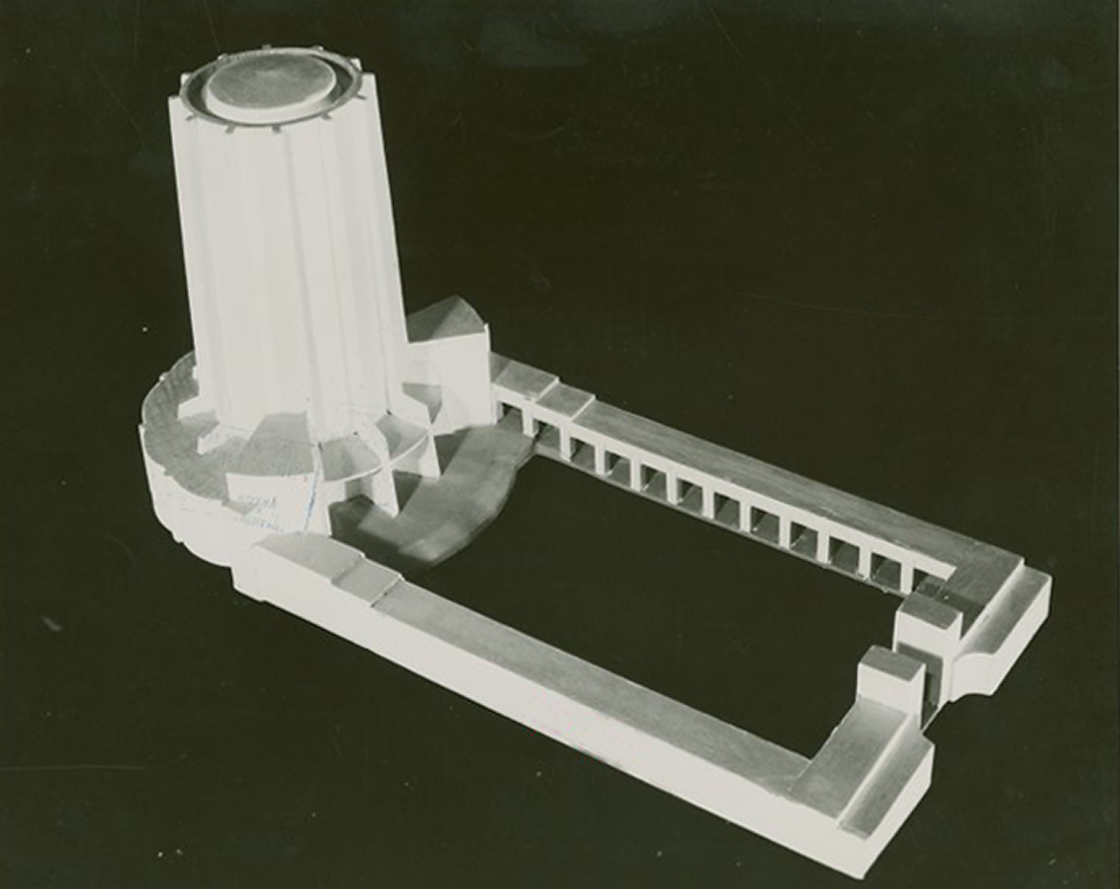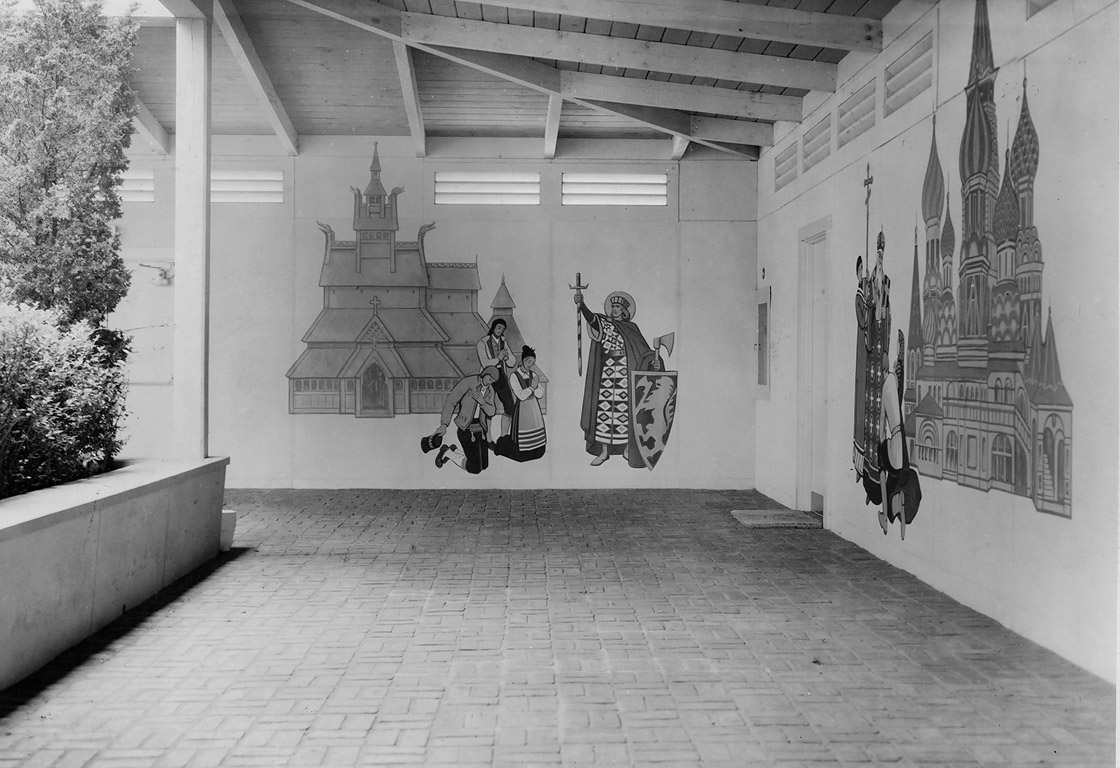Hildreth Meière Documentary Series - Watch Trailer
Hildreth Meière Documentary Series - Watch Trailer
Commissioned by: Alfred Easton Poor, Clarence Stein, Oliver ReganMedium: paintExecuted by: RambuschNonextant

Detail of map from Official Guide Book – New York World's Fair 1940 showing location of the Temple of Religion
Temple of Religion filmed by Hildreth Meière, 1939. Archives of American Art, Smithsonian Institution, Washington, DC
Paid for by private subscription, the Temple of Religion was a joint effort of Catholic, Protestant, and Jewish leaders to “cooperate in the interests of peace” as President Roosevelt had urged. The temple bore the inscription, “For all who worship God and prize religious freedom.”

Entrance to Temple of Religion with inscription

Rear view of Temple of Religion
In the arcade facing the courtyard were twelve exterior murals tracing the History of Religious Architecture, from Hagia Sophia in Istanbul to the decade-old Temple Emanu-El in New York that Meière had decorated.

Model of Temple of Religion showing arcade and courtyard
Meière donated her services by designing murals of six historic houses of worship: St. Basil, Moscow; St. Peter’s, Rome; Hagia Sophia, Istanbul; Stave Kirke, Oslo; the Narowla Polish Synagogue, and Temple Emanu-El in New York. Austin Purvis designed the other six.1 Meière deliberately kept her renderings of the world’s great religious buildings simplified, so that they would read easily.

Stave Kirke in Oslo and St. Basil's in Moscow painted on the walls of the arcade
Working in a traditional religious style, Meière made to-scale studies in gouache in her studio for each of the religious institutions she depicted on the walls of the arcade:

Stave Kirke in Oslo

St. Basil's in Moscow

St. Peter's in Rome

Narowla Polish Synagogue

Temple Emanu-El in New York

Hagia Sophia in Istanbul
To Meière, who “loved all the work [she] did for the Fair,” the fact that the murals would be destroyed after the fair didn’t matter:
From my point of view, I know that my pleasure comes primarily from creating the work itself, regardless of how enduring it may be or what it may mean to others.2
Temple of Religion, Suggested Subjects for Murals,” March 10, 1939, Archives of American Art, Smithsonian Institution, Washington, D.C., Hildreth Meière Papers.
Patty de Roulf, “Little Woman, Big Pictures,” St. Anthony Messenger (April 1944): 12.